
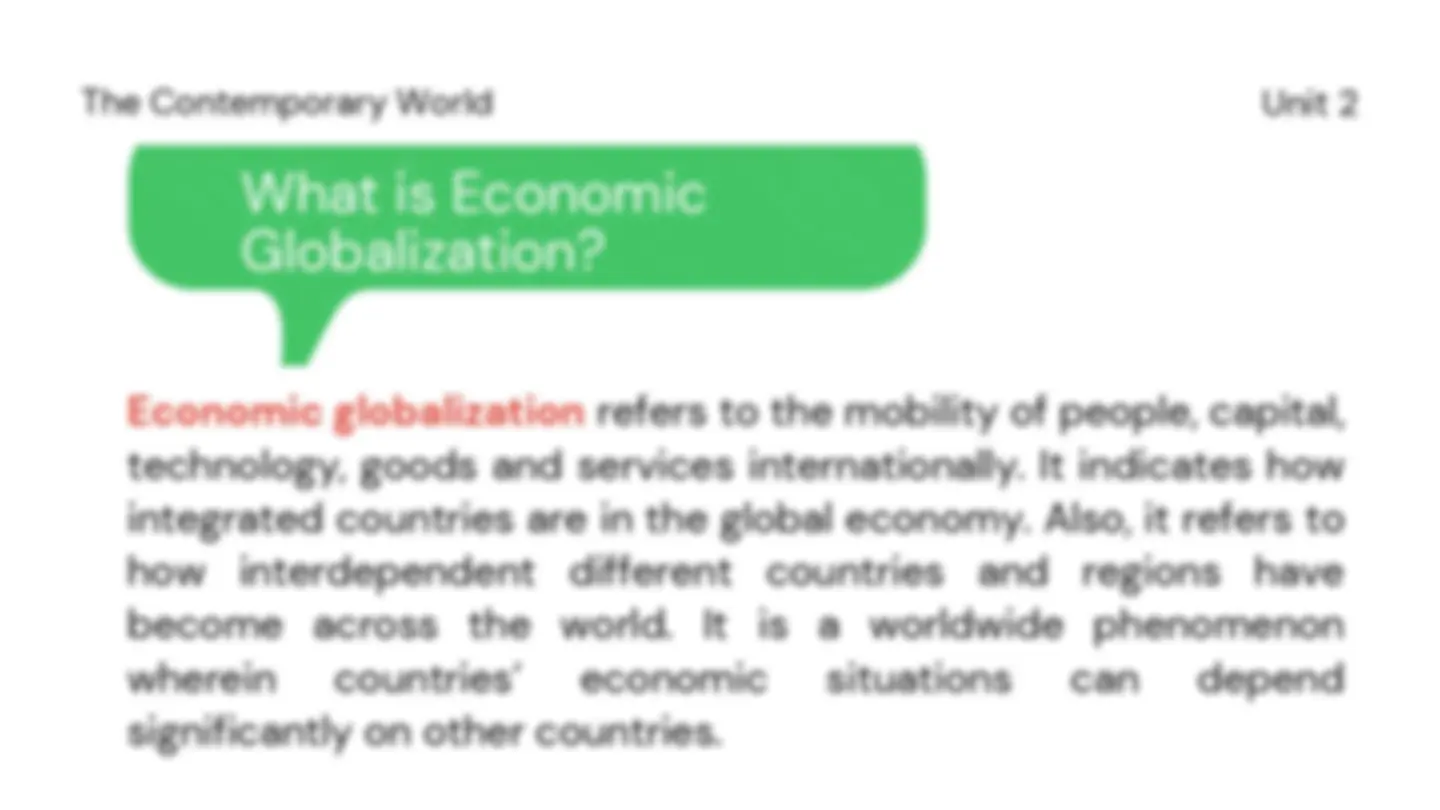
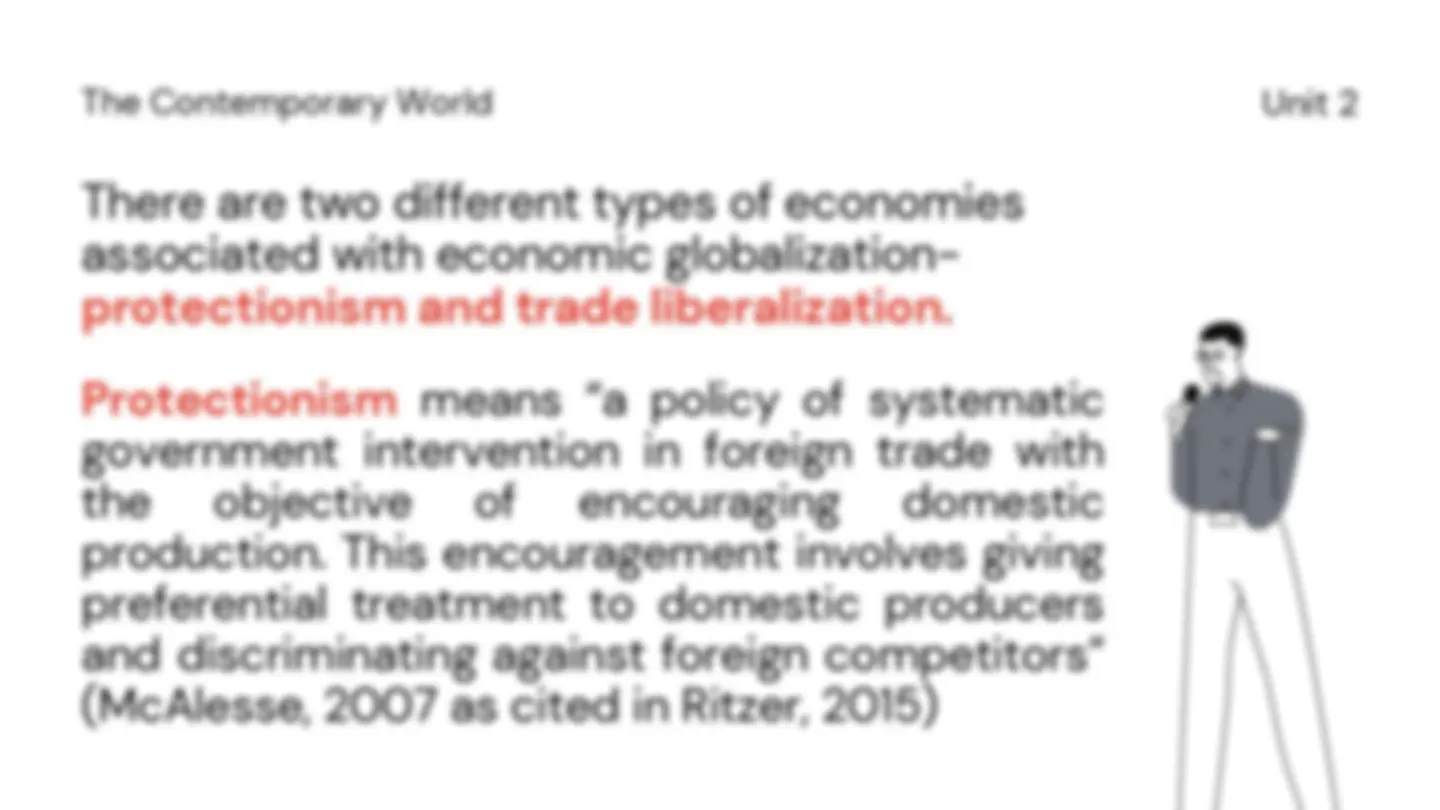
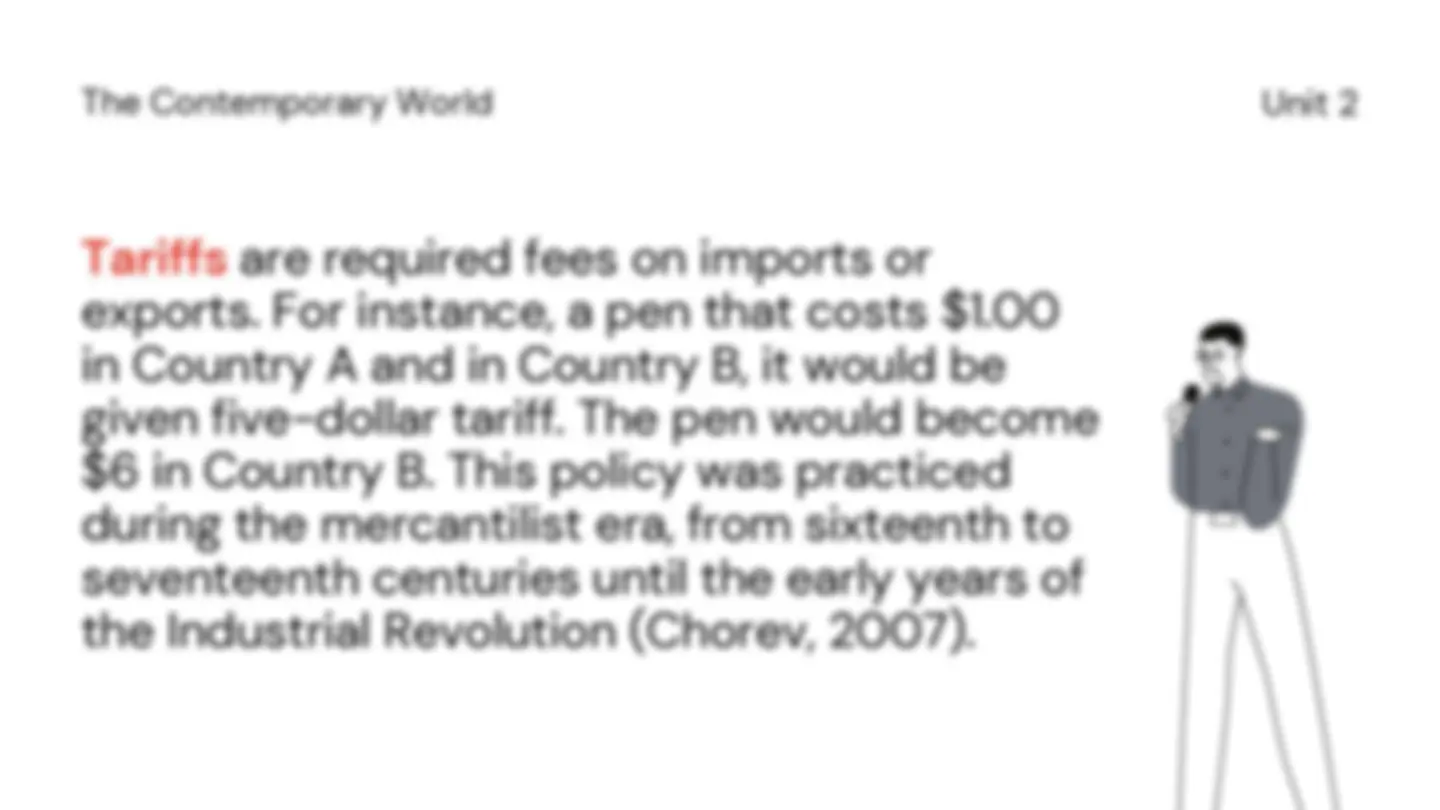
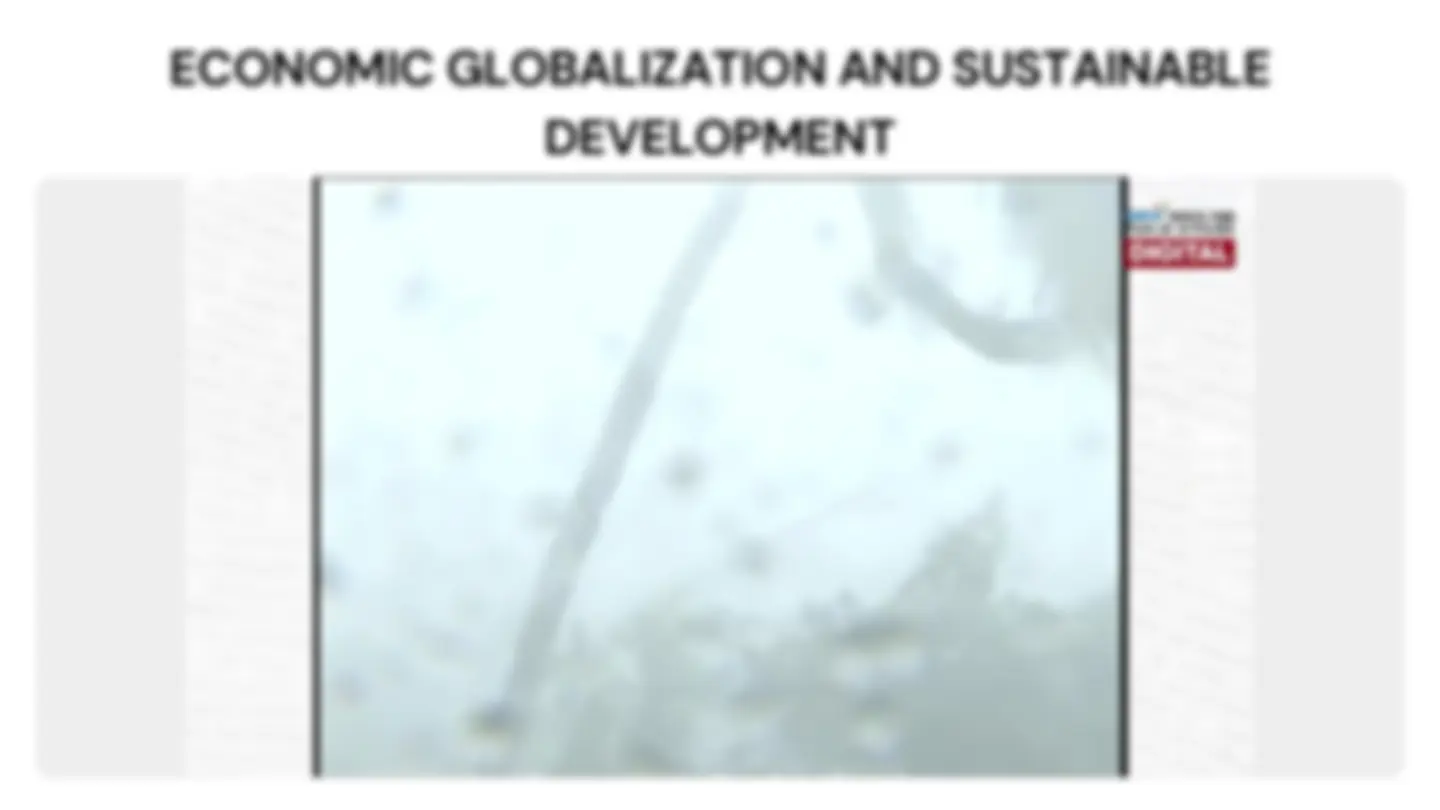
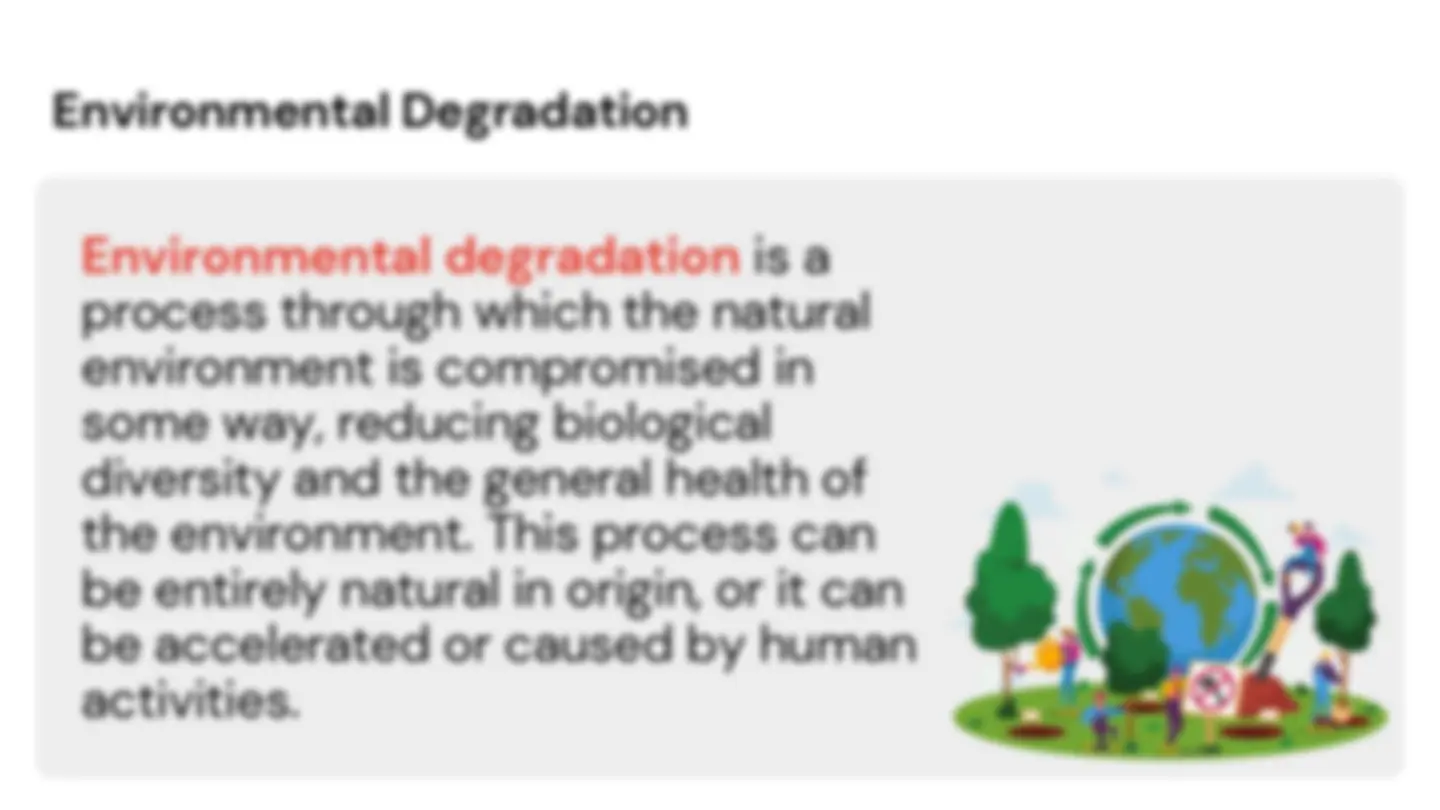
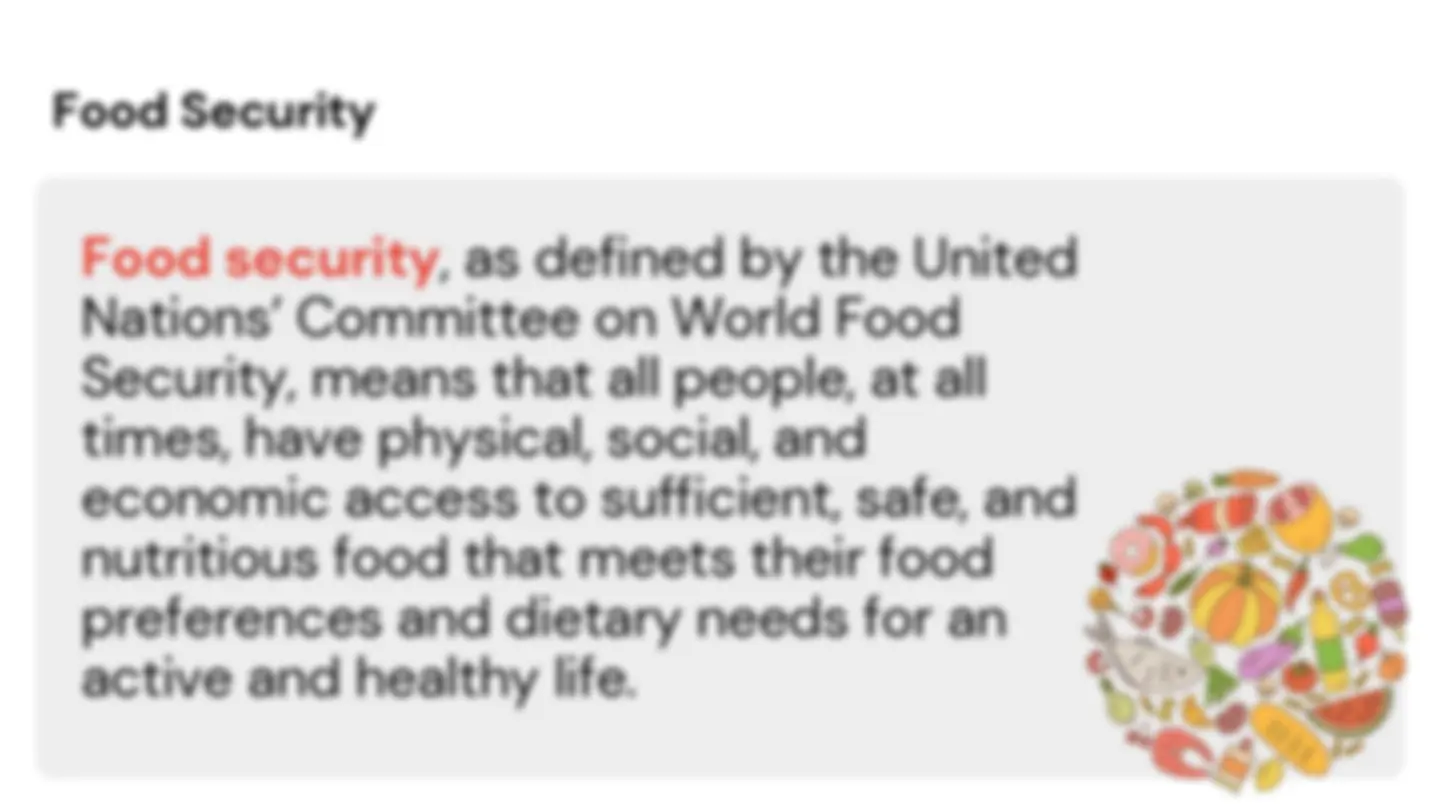
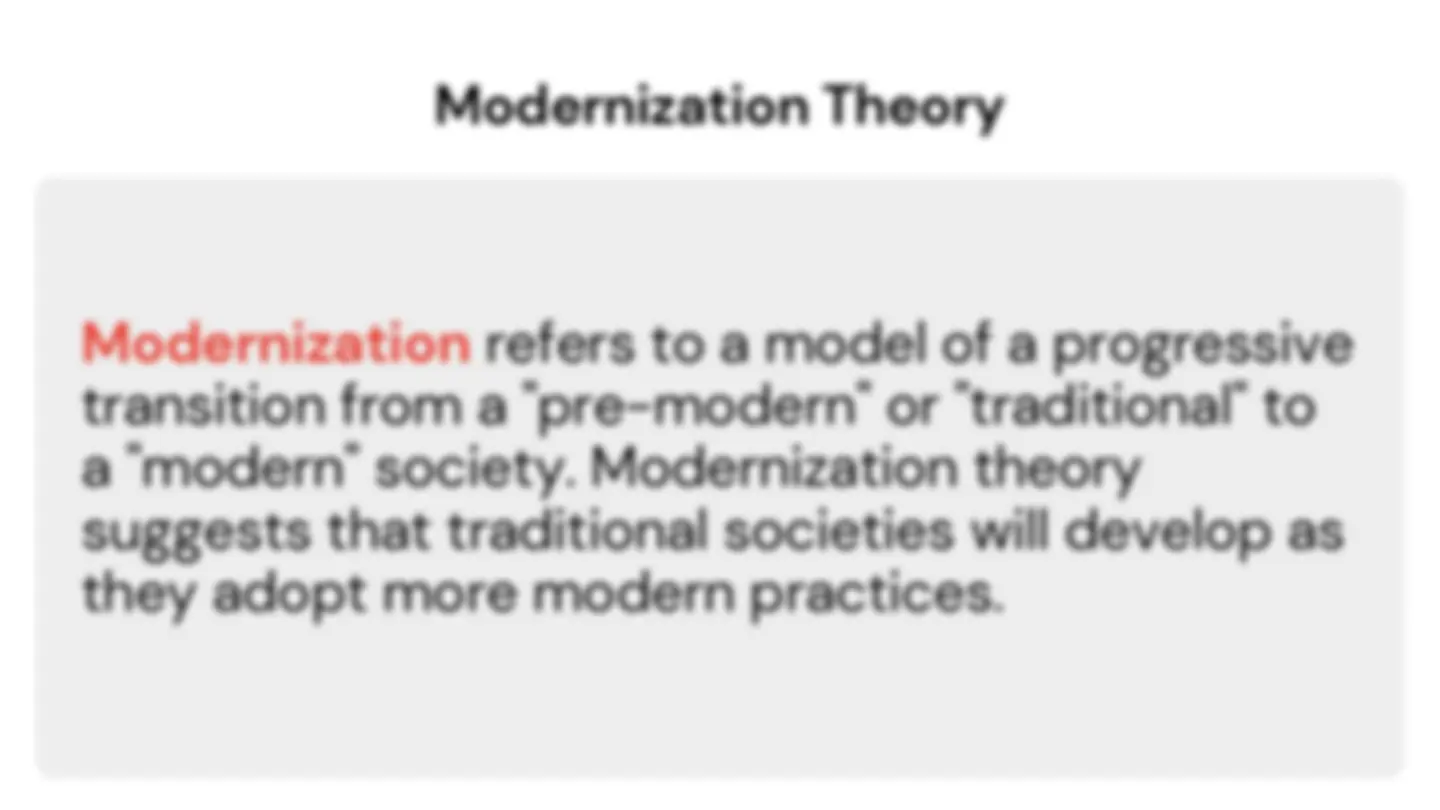
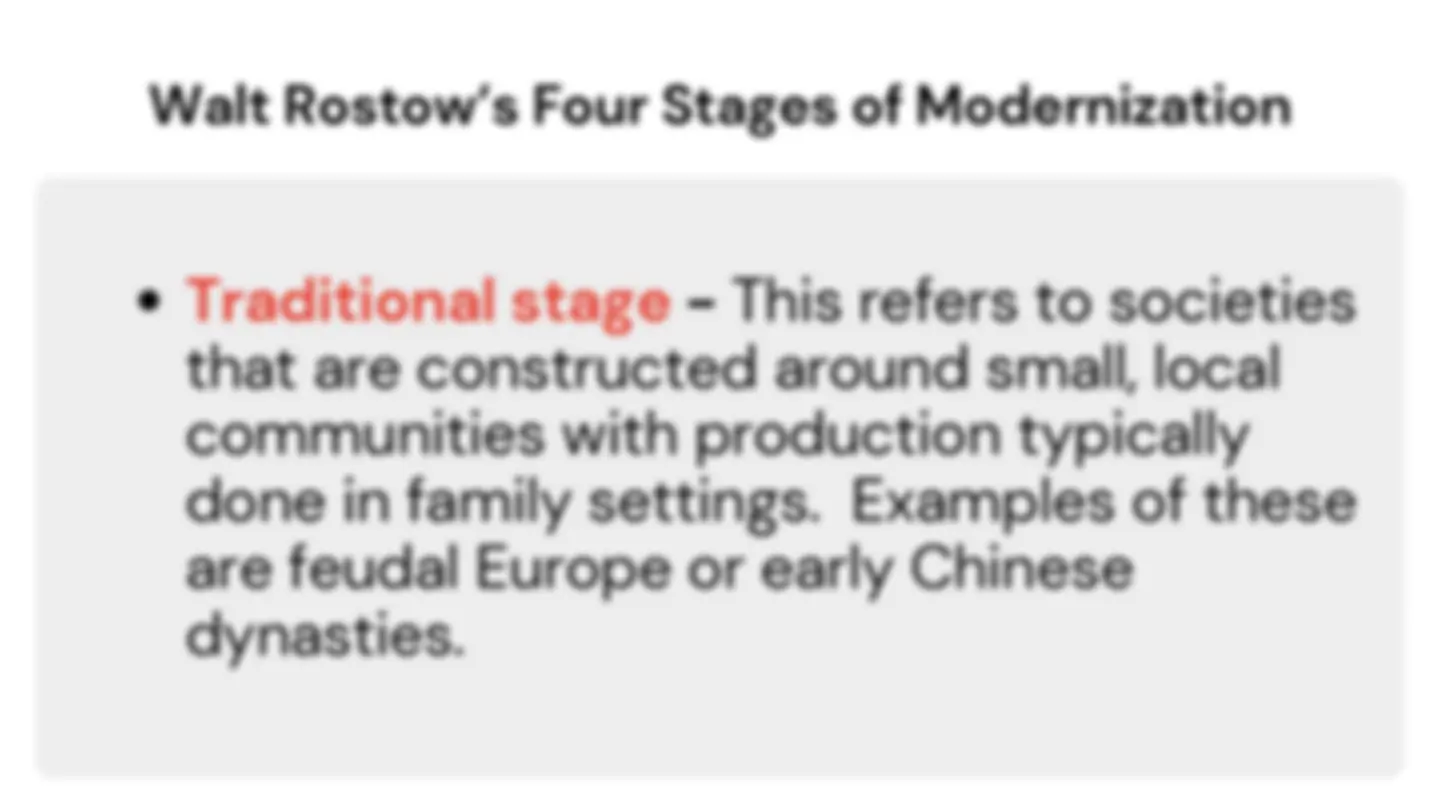
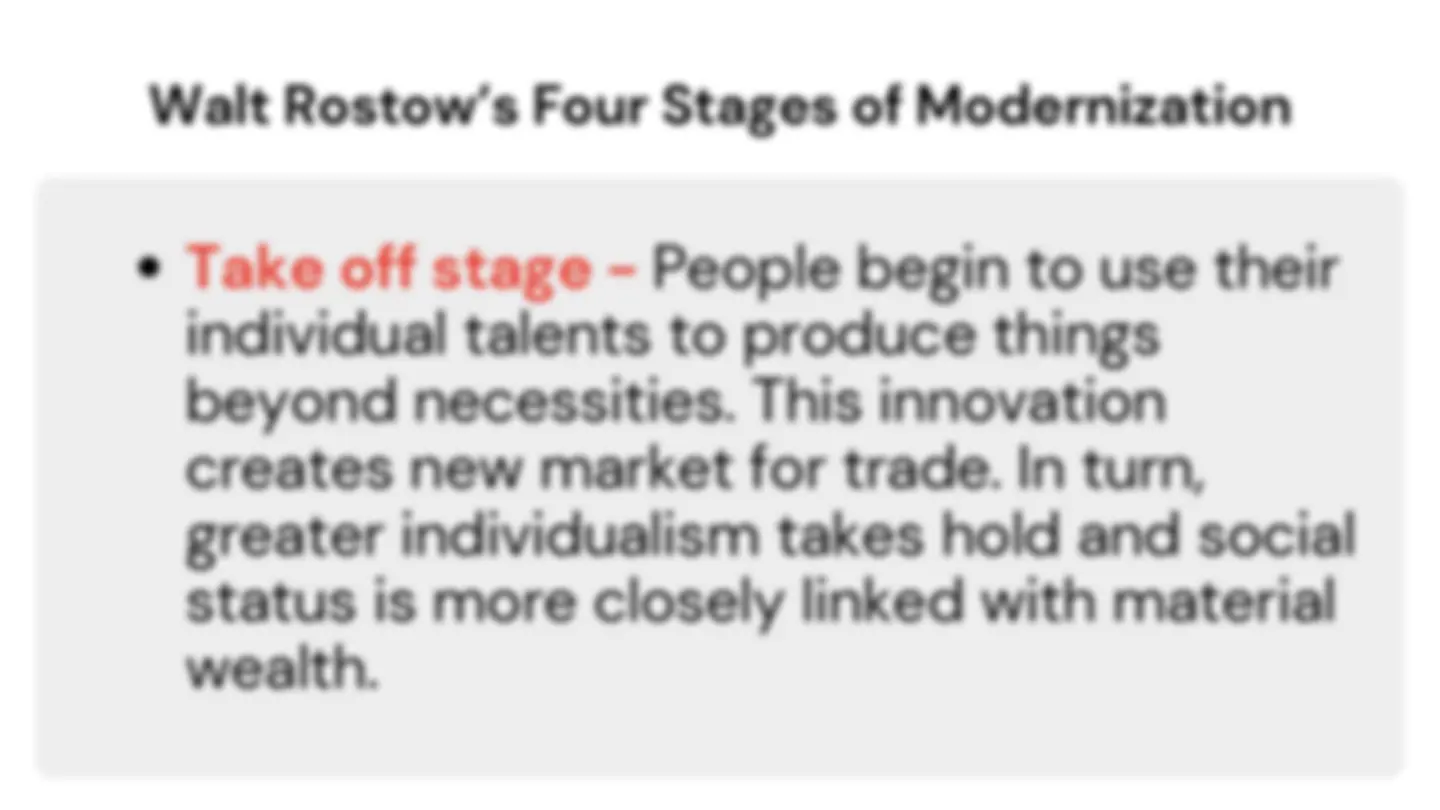
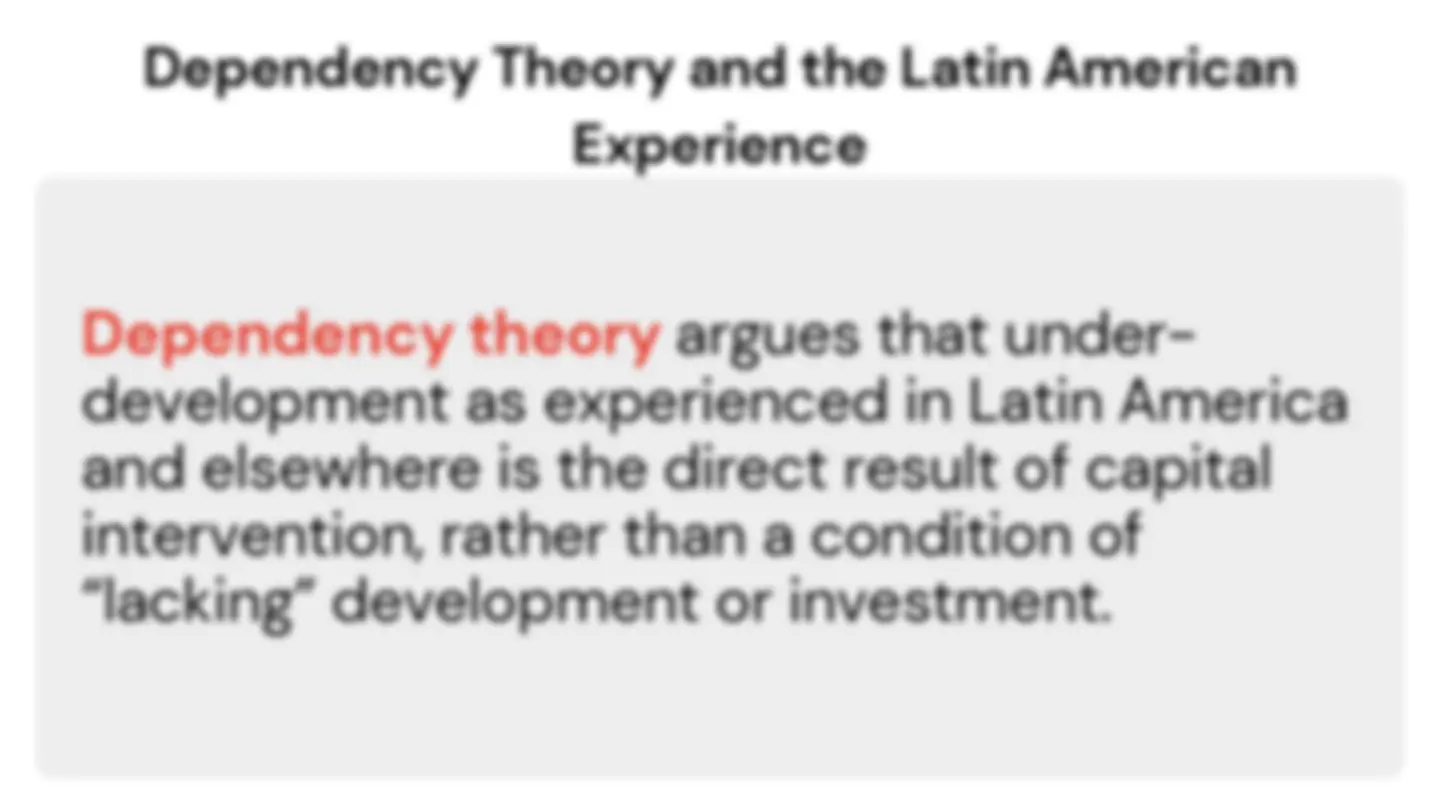
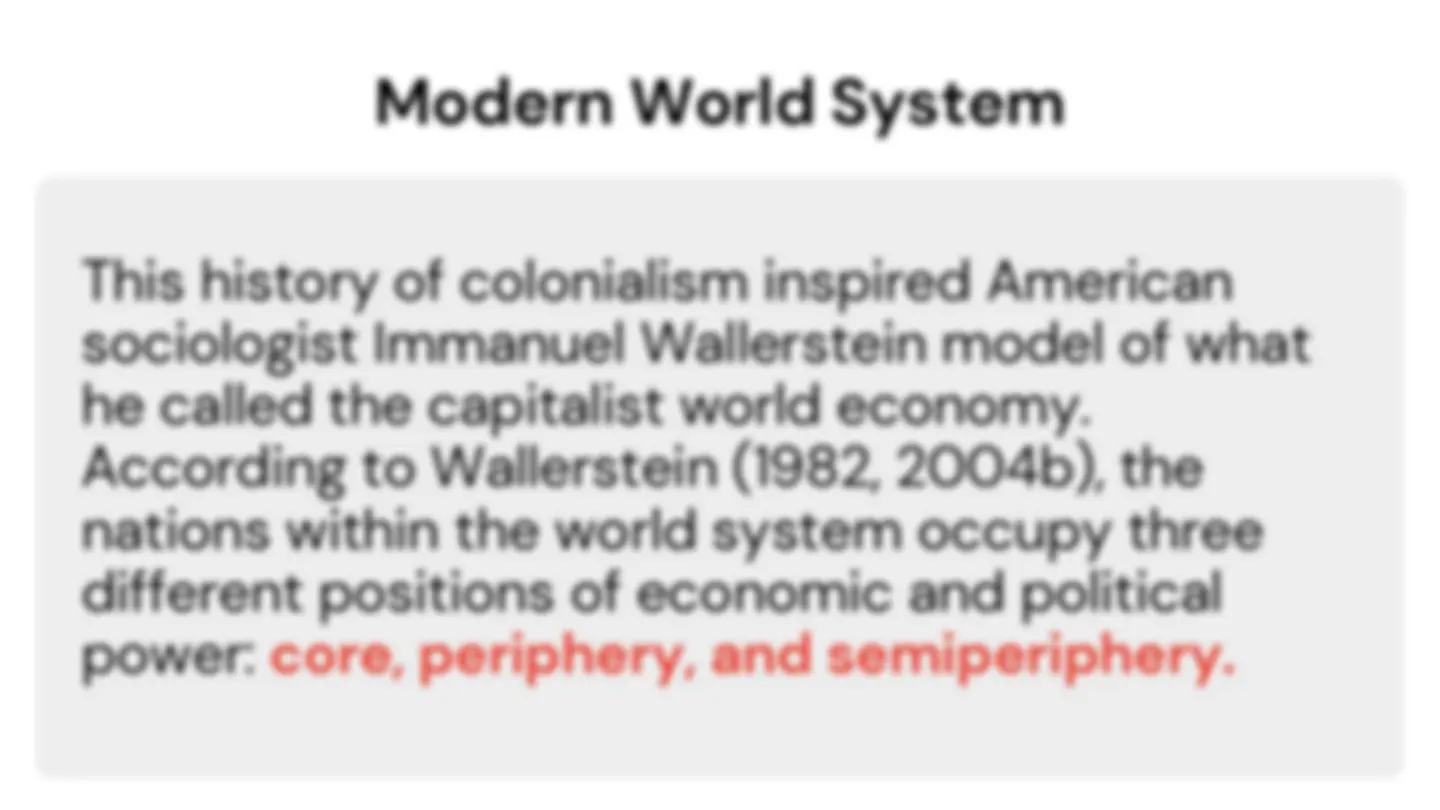
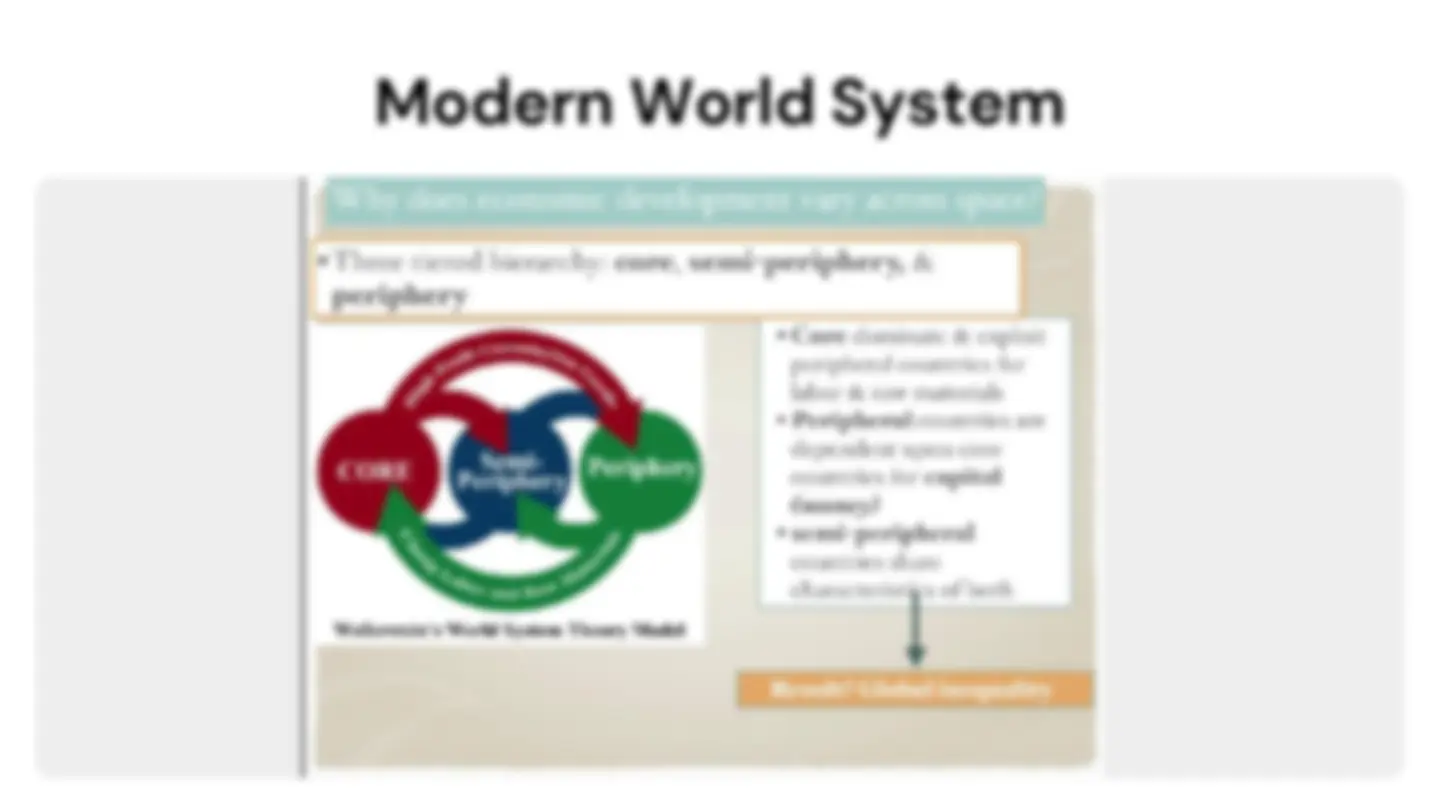


Study with the several resources on Docsity

Earn points by helping other students or get them with a premium plan


Prepare for your exams
Study with the several resources on Docsity

Earn points to download
Earn points by helping other students or get them with a premium plan
Community
Ask the community for help and clear up your study doubts
Discover the best universities in your country according to Docsity users
Free resources
Download our free guides on studying techniques, anxiety management strategies, and thesis advice from Docsity tutors
This explains economic globalization and the various theories, factors that facilitate economic globalization, and trends, risks and risk preventions brought by economic globalization.
Typology: Lecture notes
1 / 20

This page cannot be seen from the preview
Don't miss anything!













The Contemporary World Unit 2
Define economic globalization and the modern world system; Recognize and reflect about the trends, risks, and risk preventions brought by economic globalization Identify the factors that facilitate economic globalization; and, 1 3 2 Learning Objectives The Contemporary World Unit 2
There are two different types of economies associated with economic globalization- protectionism and trade liberalization. The Contemporary World Unit 2 Protectionism means “a policy of systematic government intervention in foreign trade with the objective of encouraging domestic production. This encouragement involves giving preferential treatment to domestic producers and discriminating against foreign competitors” (McAlesse, 2007 as cited in Ritzer, 2015)
Tariffs are required fees on imports or exports. For instance, a pen that costs $1. in Country A and in Country B, it would be given five-dollar tariff. The pen would become $6 in Country B. This policy was practiced during the mercantilist era, from sixteenth to seventeenth centuries until the early years of the Industrial Revolution (Chorev, 2007). The Contemporary World Unit 2
ECONOMIC GLOBALIZATION AND SUSTAINABLE DEVELOPMENT There are some significant downsides to globalize trade and perhaps the strongest argument against economic globalization is its lack of sustainability or the degree to which the earth’s resources can be used for our needs, even in the future. Specifically, the development of our world today by using the earth’s resources and the preservation of such resources for the future is called sustainable development. In other words, development has to be ensured in and for the future generations.
ECONOMIC GLOBALIZATION AND SUSTAINABLE DEVELOPMENT
Food Security Food security , as defined by the United Nations’ Committee on World Food Security, means that all people, at all times, have physical, social, and economic access to sufficient, safe, and nutritious food that meets their food preferences and dietary needs for an active and healthy life.
ECONOMIC GLOBALIZATION, POVERTY AND INEQUALITY
Modernization Theory Modernization refers to a model of a progressive transition from a "pre-modern" or "traditional" to a "modern" society. Modernization theory suggests that traditional societies will develop as they adopt more modern practices.
Walt Rostow’s Four Stages of Modernization Traditional stage - This refers to societies that are constructed around small, local communities with production typically done in family settings. Examples of these are feudal Europe or early Chinese dynasties.
Walt Rostow’s Four Stages of Modernization Technological maturity - technological growth of the earlier periods begins to bear fruit in the form of population growth, reductions in absolute poverty levels and more diverse job opportunities.
Walt Rostow’s Four Stages of Modernization High mass consumption - It is when your country is big enough that production becomes more about wants than needs.
This history of colonialism inspired American sociologist Immanuel Wallerstein model of what he called the capitalist world economy. According to Wallerstein (1982, 2004b), the nations within the world system occupy three different positions of economic and political power: core, periphery, and semiperiphery.